In the violin world, my primer is a collection what you call "pre-twinkle" exercises. While an older student may learn to play "Twinkle, Twinkle, Little Star" within the first few lessons, there are quite a few violin and musical skills that a child needs in order to be able to play this violin standard. For younger musicians I find that it's better to isolate these skills and master them one at a time. I've organized the lessons in my primer to do this. The focus in Super Strings! is helping students to develop their violin SUPER powers-- a.k.a. musical skills.
In this violin book I've chosen to use word associations to teach rhythm. I remember when I was taking piano lessons my teacher told me to use the word "raspberry" to count triplets. Later, when I was learning to play triplets and duplets, she said to piece those rhythms together with the phrase "nice cup of tea." The word associations were so intuitive that I still remember them. In my violin primer I wanted to be able to tell stories with a cast of characters, so this is what I came up with:
Using these characters I was able to tell a story with pictures and notes.
My students have absolutely loved using flash cards to create their own rhythmic combinations. And then, once we reach their repertoire pieces I'm able to use words to remind them of their rhythmic combinations.
Another important thing to consider when teaching very young students is the "wiggle factor." Young children just have a hard time sitting still for very long. BUT if you're able to focus and channel and this wiggle energy in your lessons, then both you and the student have won! One of the ideas I came up with to teach the open strings allows kids to move during the lesson, while also learning.
Each of these super musicians represents an open strings. I wanted their body position to represent the pitches, so the lowest pitch is sitting down and the highest pitch is reaching his arms up into the air. My students have loved striking these super musician poses, and the kinesthetic connection to the notes works wonders in helping them remember which string is which.
In my next post I'll discuss some of the review and fingering techniques that the the violin book teaches young musicians. Check back in a few days! Or learn even more about the violin book at SuperStringsMethod.com
0 Comments
This post contains affiliate links.
Over the years I've taught many self-diagnosed "tone deaf" individuals. Their issues have ranged from (literally) monotonous singing, to two-pitch singing, to consistently singing under or over the pitch, or wildly hitting pitches up and down the scale. Some of my students just needed a cheerleader to tell them they were actually singing in tune. Today I'll share what I've done in the past to address each of these issues.
The important consideration when teaching an individual with pitch issues is their learning style. My experience as a student has exposed me to three basic ways a teacher can teach: Mimicry, imagery, and mechanical explanation. Most of these styles can be supplemented to some extent with kinesthetic or tactile teaching. I have found that kinesthetic learning is often the key to reaching out to and correcting singers with pitch issues. Mimicry can be a strong teaching style, but without any kind of kinesthesia along for the ride, it's really the worst way to try and teach someone with pitch issues. Simply demonstrating and asking for the student to parrot back a melody probably won't work, otherwise they'd have learned just by listening to the music around him or her. However, demonstrating correct technique while inviting the student to monitor what you're doing with their hands can be extremely helpful. When I worked with a student who literally sang one note over and over, I invited him to feel my larynx as I sang scales up and down (it can also be helpful to invite your student to monitor your diaphragm and breathing). Now, generally speaking, I've been discouraged from allowing my larynx to move around a whole lot when singing, but in this instance, as my pitch rose, I elevated my larynx a bit and as my pitch descended, I would depress my larynx. All the while, my student gently monitored this action, feeling vibrations and movement. I also demonstrated with one of my hands whether the pitch was raising or lowering. Then I asked him to monitor his own larynx and experiment while trying to reproduce what he had felt happening in my body. While he did so, I was able to offer feedback and answer questions. Sometimes I would match his pitch on the piano so that he could visually see the space between the pitches that he was singing. In this vein of visual learning, I have also found it helpful to teach basic piano skills concurrently with singing. Once a student can match at least one pitch, then I have have him or her accompany themselves on a basic five note vocalize. It's actually been incredible to me how often students match pitches better if they are the ones playing them. When they are able to see and feel the steps on the piano their brains seem better able to make the connection to pitch. Beginning piano books that offer simple tunes a student can learn to both play and sing are very useful. Below are a few of my favorites, depending on the vocal ability of my student. You can click on the image to order them on Amazon:
Teaching visually or with imagery can also mean creating visual metaphors for the student to link correct technique to. For example, one student I had loved basketball. She was often able to approximate a pitch but was almost always flat or sharp. We talked about shooting baskets and how shots can either be over-energized or under-energized. We related this to pitch, breath, and abdominal engagement--engagement is all about being strong enough without being tense so that you can make your perfect "shot." Sometimes she would even mime shooting a basketball when hitting a specific pitch. Once we used this image, her pitch improved significantly. Being able to find an image that your student understands and relating it to singing can be hugely beneficial; the more personal the image, the better.
In general I try to avoid songs that are too familiar to my students, especially those with pitch issues. Remember, you're trying to teach a student to listen and learn in a new way. I think that singing familiar songs inevitably invites a level of unconscious laziness: "I know this song, so I'll just sing it now without bothering to listening too closely." Requiring a student to learn an unfamiliar song also requires listening. Choosing the songs, though, can be difficult, because even singing books for "young" singers might be too difficult. So, like I said, I often use children's piano books, or you can also find free folk songs on the internet. I've also really enjoy Joan Boytim's series of "easy songs" for beginning singers. Sometimes even then the songs are a little hard for certain students, but they often enjoy having a real music book with classical songs. My favorite songs are in the Soprano and Bass books; many of the soprano songs could be sung by a tenor, and most of the bass songs could be sung by a mezzo. Here are links to that series:
With my "tone-deaf" students, I also really like to explain the mechanics of singing. Mechanistic explanations often really resonate with them. I'll explain (and show, with diagrams) the structure of the larynx, the vocal folds, and how Bernoulli's principal works to create a buzz tone. I help them identify the various resonance chambers and the muscles in the larynx that are responsible for head voice or chest voice. With regard to pitch, explaining where the sympathetic vibrations are felt for both chest and head voice has been really useful. Once a student realizes that ranges of pitches can actually feel different, you've given him or her another self-monitoring tool. Providing students with self-monitoring tools is crucial; as I mentioned above, some of my students didn't even have significant pitch issues, they just needed some reassurance and cheer leading. These students need all of the most accurate self-monitoring tools you can give them in order to keep growing their confidence.
Correcting pitch issues can take time. It definitely requires patience from both the teacher and the student. I always make sure the student knows that while there is a fix, it's not a quick fix. I try to focus on the positive and point it out to my students. One student who began with me literally sang two pitches. When a melody went up she hit the higher pitch. When it went down, she hit the lower note. What I pointed out to her (and myself) was that this at least indicated that she could hear the direction the melody was going, right? And that was definitely a starting point. Another student would get discouraged every time she hit one or two wrong notes in a song. With her, I always said "94% is still an A; if you hit 1 wrong note out of 20, you still get an A! And not just for effort!" As teachers we should encourage reasonable expectations from our students and ourselves. Don't let pitch problems discourage you! Happy Singing!
Well, after a big move across six states and the obligatory Comcast nightmare, I'm back to blogging. One of the fun things about moving is that you get to meet people and learn about them. After I've met someone we often end up talking about what I do as a singing teacher and their own vocal history. Almost everyone seems to have some interest in singing, whether they wish they could sing better themselves or just enjoy listing to a certain type of singer.
As I've been talking to people over the past few weeks I've thought a lot about some of the common misunderstandings surrounding singing. It's not the first time I've encountered these incorrect ideas, but this time around I've really mulled them over. I met one lady who began to explain some of her vocal difficulties (mostly allergies) to me. When I asked a few probing questions, she immediately said "No, really, it can't be fixed." And that was that. It struck me as a bit odd; not the women herself, but the interchange in general. Maybe I should leave the probing questions for lessons, but would you start to explain some medical problem to doctor you just met and then tell THEM that it was incurable? Another girl said to me "If I could choose any talent to magically have, I'd choose singing. I feel like almost anything else you can learn to do, but singing is just gift you're born with--or not." Both of these ladies have fundamental misunderstandings of how singing works. Anyway, these exchanges--and others like them--have inspired today's post. Here are 6 Myths (and a bonus Truth) about singing.
Sure, not everyone is going to be able to play basketball as well as LeBron James, right? But everyone can learn to play basketball better than they do now. I can personally attest to this as my husband loves basketball and has taught me quite a few things to improve "my game." I still can't shoot from the 3 point line (I'm pretty weak), but I probably could if I were willing to invest in the strength training needed. I'm just . . . not willing. It's not one of my priorities in life, and that's fine. If you don't have the time, drive or desire to be a better singer that's your choice, but know that you could improve. Very few physiological issues are actually going to prevent you from singing.
Beyond this, some people think that if they don't have a good ear they'll never be able to sing. But hearing and singing melodies can often be trained. I've worked with a dozen people who have claimed to be "tone deaf." Some had a harder time than others, but every single one of them improved enormously after investing the time and energy necessary to develop that skill.
However, most often I find that people's sensory systems rather than the vocal mechanism itself are compromised by allergies or colds. This means that it feels or sounds weird to sing, but not that they'd be unable to sing, especially if guided by an experienced teacher. In fact, sometimes singing with a cold can be a blessing--as long as you're hydrated. It often forces you to sing more correctly and not to rely on faulty monitoring systems.
And while honey may ease a sore throat encouraging you to sing with tension, it won't do anything for dried out vocal chords per se. For that, you need to monitor your fluid intake. That said, drinking something soothing can ease tension which in turn can be helpful when singing. And on a related note, food may interfere with singing if you have a legitimate, serious food allergy. This should be temporary though, and hopefully easy to avoid.
Singing is a lot about proper body awareness; in this way it's very much like yoga. I think that's one of the reasons I love yoga. I tried to learn yoga from youtube videos at first, which was fine, but I certainly didn't nail down proper technique until I attended yoga classes with a teacher who could correct me personally rather than just trying to mimic what I saw on a screen.
And after all of those myths, here's a Truth: The best thing you can do to improve your singing is to get over yourself. Time and again, the most common issue I run into with students is a hesitancy to try new things or to go "all the way" with some instruction I've given because they're afraid of the sound that will come out of their mouths. These inhibitions can completely undermine vocal development. Be willing to try new things and experiment. Self-consciousness makes people declare that they "can't" sing. It's easier to believe that you can't sing "period" than that you can't sing now but that you could sing if you really wanted to put the time and effort into it. It's okay if you don't want to learn to sing--we all have to choose where to put our focus and energy. And though I really believe singing is something that can benefit both the body and the mind in every individual, you have to choose where your time and attention will go. But know that you CAN sing. You really can.
People have been asking me about teaching children singing lessons--how do you do it? What do you do differently in a child's lesson than you would do in an adult voice lesson? Today I'll break down the structure of my voice lessons, and talk about teaching methods for children; I've also included a free printable set of cards you can use as a "game" in children's singing classes. (If you want to know why I think singing lessons for kids are a good idea, see this post).
I typically teach 30-45 minute voice lessons. Longer lessons just mean that a voice student has cultivated greater vocal endurance and is tackling more difficult repertoire, it doesn't actually impact the structure of the lesson. Ideally, my student will have sent a "practice report" notifying me of any breakthroughs or frustrations during their week of practicing. I will then structure my lesson plan around working through the difficulties and capitalizing on the momentum of the breakthroughs. The time generally breaks down like this:
When I'm teaching children I basically keep the same structure: Warm-ups, memory checks, new repertoire, and verbal review. The main difference is that I try to make everything seem like a game.
When we're reviewing repertoire, I might switch between the staccato card and the legato card. This keeps practicing from getting monotonous and teaches musical expression. When we begin learning a new song, I like to isolate melody from words (for both children and adults), so I might have my student sing through the piece on "Baa" (the sheep card) or with the tongue-extended "Ahh" (going for primal sound and a relaxed jaw). Switching between the two cards can be fun as well.
My goal with teaching children is to teach singing concepts without the child knowing they're being taught, in an organic way. I want kids to learn music and singing like they would a language. So while I do teach music theory concepts like a teacher would teach letters or numbers, I want to teach singing concepts more like a playmate would teach their friend a new word--just by playing with them. I steer clear of outright correction and instead include games to address issues that I might hear such as intonation or rhythm problems.
I also focus a lot on imagery (hence, all of the illustrations), and stay away from mechanical explanations or asking children to mimic me (except when teaching a truly new thing like primal sound). I've included a PDF of the game cards below. They're the perfect size to print out and glue on index cards. Or just print them on card stock and cut them out! Happy practicing!
I was talking to another voice teacher (actually we were texting, but for introverts like us I think it counts as a conversation, haha) and she was asking me how I deal with young singers who have totally different qualities in their lower and upper registers. It almost sounds like they have two completely different voices. She mentioned that this seems to happen more often with her young altos and mezzos than sopranos. Does this sound like you? What to know how this happens and what to do about it? Then read on!
While this system is important to singing, I mainly want you to see where and how the larynx is situated to make the next picture make more sense. This is the top view of that larynx. Now you can look inside and see where your vocal folds are situated.
So you see that there are muscles inside your larynx as well. I've essentially isolated the thyroaretnoids (T.A.s) and cricothyroids (C.T.s) in my illustration because they're the muscles that are responsible for this sense of dual vocal quality. Essentially, the C.T.s control the pitches in your chest voice, that deep part of your voice where you feel sympathetic vibrations in your chest. By contracting and releasing, they manipulate your vocal folds so that they vibrate in different spots creating different pitches. The T.A.s on the other hand control your head voice, the high pitches that might feel buzzy in your skull rather than your chest.
Now, some pitches are only going to be able to be produced by either the CTs or the TAs because they're either really low or really high. But what about all of the pitches in between? That's where it can get kind of interesting. These pitches can be produced by multiple possible manipulations; you can either favor the TAs or CTs or employ a combined manipulation of both muscle pairs. When both the TAs and the CTs are working this is called "mixed voice." Some of these manipulation options are going be healthier than others.
So, what's making that "two voice" effect? Basically it's you switching from one muscle group to another (i.e. CTs to TAs and vice versa) as you vocalize. If you're untrained, it's probably easier to just pop back and forth between the muscle groups rather than gradually transitioning to the next muscle group. Think about doing a push up and lowering yourself slowly all the way to the ground. If your muscles are under-trained, you're not going to be able to lower gradually, you'll just plop on the ground. That's essentially what's happening to your voice.
Well then, how do you fix it? You fix it basically the same way you'd fix that push-up: by repetitive exercises. Generally I find that Sopranos/tenors favor their head voices and mezzos/bases their chest voices (although not always), but basically the way to fix it is the same--you may just work from different starting points. Here's what I'd do in a series of lessons: First, I'd begin by working the voice in the less-comfortable range. This can be a little tricky, because I don't want to create tension, but the under-developed range of the voice needs to be worked out. So, I'd find a selection or two of short folk or other simple songs that are in that range. For a mezzo (or base/baritone) struggling with her head voice I might try "Love" from Robin Hood or "How Can I keep from Singing?". For a Soprano (or Tenor) who needs to work on her chest voice I'd pick something like "Are You Going to Scarborough Fair" or "Where are you going?" From Godspell. Maybe we'd just use sections of those pieces. I'd ensure those sections were tension-free and ask students to sing them every day. Often I have to reassure singers that it's okay for them to sound weak or young and remind them not to "force" a more mature sound. That sound will come as you work out your voice. It's really just the same as working out at the gym and gradually increasing your strength and endurance--if you force something too early you're asking for an injury. Next, I'd run the student through a TON of slides. Something simple like this (sing these on an "ah"):
I'd work from a comfortable range gradually moving into newer territory, depending on the voice. The KEY with these exercises is to really slide. The tendency is to skip some pitches somewhere (especially towards the end of the slide) and again just sort of "plop" onto the next pitch. If you do that the exercises won't work. You have to really hit every little micro-tone in between the pitches. Move slowly enough at first that you are sure you haven't skipped anywhere. If your voice wants to "pop" somewhere, do it again, more slowly. Once these exercises are comfortable, I'd add various vowels, maybe even work some vowel equalization (see this blog post). I have several other vocalizes you can try in mymaterials section on the website.
Unlike my straw tool, this isn't a quick fix kind of thing (although running trough these exercises with the straw is a good way to avoid tension inyour less-comfortable range). It takes consistent, correct practice to meld the two voices into one. Just be patient with your voice and gradually build up the strength you need. Happy practicing!
I get this question--and others like "what age should my child start voice lessons?"--all the time. So, here's my answer.
It depends on what your expectations of the voice lessons are. If you're hoping that your child will learn rigorous vocal technique and suddenly be able to sing "O mio babbino caro," then I'd say no. You should wait until the teen years to start with a voice teacher for technique. Just like every physical activity--dance, sports, etc.--there are age appropriate and inappropriate approaches. You shouldn't train a child to sing Puccini any more than you should train a child for a body building competition. It's physically unhealthy. That said, I actually think singing lessons for children are a really good thing. Why? Because most kids are not getting enough exposure to live music. Children learn skills through exposure and imitation, but if they aren't listening to live singing how are they supposed to imitate? Listening to recordings is not the same thing. What children really need is musical immersion so that they can absorb musical concepts. Maybe your school has an excellent elementary music program and teacher, or maybe your church does. The more I move around the country, though, I'm convinced that this is clearly the exception rather than the rule. And even if your church or school have great children's music programs, could you say they're being immersed? What should you expect out of a children's singing lesson then? Depending on the teacher/interest level, this may be an individual or group lesson. A good teacher will focus on teaching children music as if it's a language. They won't over-correct, just encourage experimentation with this new language. Kids can learn the language of music so much easier than adults. Most of the "tone deaf" adult students I work with now simply didn't spend much time singing as children and now they're working hard to learn something they could probably have absorbed as kids. Your child's singing teacher can teach concepts such as rhythm, placement, solfege, and melodic expression through vocal play. A child's music lesson should be fun, keeping him or her entertained through games, singing, stories, and other activities. Kids can learn to sing songs by themselves (solos) as well; again, a good teacher will pick age-appropriate repertoire such as folk songs or Broadway pieces intended for children. Even if you decide not to go the formal voice lesson route, make singing with your kids a priority. Schedule a time and be the voice teacher; put together a plan and actively sing. There are plenty of resources on the internet for fun musical activities you can do with your children. Take the time to teach them a skill that will influence their mental development and stick with them for the rest of lives! 
Brought to you by one of my student's questions. Have you ever wondered what the difference between an aria and an art song is? Or maybe just what someone means when they say "aria"?
The simplest answer is that a solo piece from an opera, oratorio, or cantata is an aria while a stand-alone (or sometimes part of a set or series, but not a full-blown cantata) is a song. In general, art songs are going to be more suited to young or beginning singers. Many arias require more vocal stamina and technique than a young larynx is simply capable of (without unhealthy over-manipulation). So the next time you see some little kid singing an opera aria on whatever talent TV show you like, just know that it's actually pretty unhealthy for them. They're probably going to permanently damage their vocal folds. Bonus: An opera is a staged work with costumes, props, etc. that tells a story; an oratorio is not staged, is often religious (it grew out of the prohibition of staged works during Lent); a cantata is like a short oratorio; a sacred cantata may actually be part of a church service. Broadway pieces I'd just call songs or melodies. In honor of Mother's Day this weekend I've chosen all lullabies as my clips. Enjoy!
Just to confuse you, I'll go on to discuss specific types of art songs. :) Beginning singers will focus on songs from these four languages' musical traditions:
Have you ever mimicked someone's accent or perhaps made up nonsense "words" that were meant to sound like a specific language? Kind of like the Muppet's Swedish Chef? I was once with a group of French people who were making fun of the way Americans speak. As they were mimicking us their faces went kind of slack and their jaws and lips barely moved as they said something like "bluh, bluh, bi, bloo, bluh." What they were getting at, I think, was that Americans facial muscles tend to be pretty relaxed when we're speaking comfortably, and often our vowels can sort of morph into very similar sounds. On the other hand, when I first lived in France and was speaking French almost all the time my face hurt. I was using facial muscles more often in ways that I wasn't used to.
It makes sense that American English would sound garbled to a foreigner; the International Phonetic Alphabet has 30 different symbols for vowels, but Americans use at most 16 of these, and most regions use fewer. British English speakers, on the other hand, use about 20 vowels compared to our 16. So, yes, when we speak it may kind of all blend together. But wait . . . don't singers want to blend? Don't we want to develop that creamy, gooey, luscious legato vocal quality that just makes the sound luxurious? The answer, at least for classical singers, is yes, we do. But at the same time, we want to be heard, understood, and we want build up vocal stamina in a healthy lasting way. This means, then, that the key to creating a smooth silky singing voice is in steady constant air flow (see this post) and vowel equalization. First I want to talk about vocal placement. Placement isn't strictly about vowels, but understanding vocal placement will be helpful later in the post. I like to use a scale to represent forward and backward vocal placement. If you've ever heard about singing in the "mask" or anything about forward and backward singing, this is probably what it was referring to. I find the easiest way to explain it is that forward placement sounds like the Wicked Witch--"I'll get you my pretty!" When speaking or singing this way you'll probably get some sympathetic vibrations in your nose and cheek bones. Backward placement sounds like Santa Claus--"Ho, ho, ho! Merry Christmas!" This may feel like you've got a frog in your throat. Neither of these vocal placements are correct--they are simply the extremes. Correct placement is in the middle somewhere. Once you've established these two extremes (I'd recommend just practicing with your speaking voice first) you can play around with the degrees of forward and back, basically every placement in between.
There are more than 5 possible placements with micro-degrees of change, but 5 is a good amount to figure out and master when you're playing around--and it lines up well with the vowel placements I want to talk about.
Now on to the vowels. There are more than the five or six that I want to discuss, but these will do for today. In the International Phonetic Alphabet [a] = "ah" as in hot, [ɔ] is "oh" sound as in chores, [ɛ] is "eh" as in bed, [e] is "ay" as in way, [u] is "oo" as in shoe, and [i] is "ee" as in tree.
I've said before that I was a really hard student to work with, right? Because I needed things explained so many different ways before they clicked? So, the following explanation is really the marriage of things I learned from several different teachers.
So, how can you fix this? First, you can think of sending your vowel in the opposite direction than the way that they "want" to go (send your [u] forward towards a 1, and your [i] back towards a 5). Ideally all of the vowels then end up in the same place in the middle--I personally "feel" that this placement for me is between my molars. All of my vowels should "land" there. Another way to get all of your vowels into the same placement is by singing vocal exercises that switch quickly between two vowels; this will help bring the two vowels to the same placement, thus "equalizing" them. There are some vocalizes in the materials section of my website that you try if you want (here).
This chart gives a more detailed explanation of how the vowels should be formed. notice that the vowel "opposites" of [i] and [u] use only the lips to change back and forth between the two. The jaw and tongue shouldn't move. They don't need to move. Try it and see. When you're moving smoothly between the two you might feel like you're saying "wee." [o] and [e] are the same, only lips involved. They become "way." Now, if you then want to equalize [u] and [o] for example, the lips stay in the same place and only the jaw needs to move. This then becomes "woah" when sung smoothly. [i] to [e] becomes "yay." If you can master this sort of vowel equalization you will have mastered the most efficient way to create legato. You will have also eliminated any tension that may come from vowel formation and increased your vocal endurance. It takes practice, but it's definitely worth your time. Happy practicing! I mentioned these in an earlier blog post about auditioning, but coffee stirrers are an amazing vocal tool. You need one that's basically a little straw, and the single tube (rather than the red double-tube kind) work best. Using one of these in your singing practice can help improve your legato, increase vocal stamina, and keep things quiet if you don't want to disturb anyone. But today I'm going to mostly talk about how it can help you improve your vocal range and avoid injury. First, you should understand a little bit about how vocal sound is produced. In your throat is a little box made out of cartilage called a larynx. This houses your vocal folds which are also surrounded by small connective ligaments and muscles. When you send air through these folds the rapid air flow decreases the pressure between the two folds and draws them together (Bernoilli's principle. The same thing that makes airplanes fly. Interesting, huh?). When the vocal folds are drawn together, they vibrate and create a buzz sound; these sound waves bounce around in your throat and mouth and when they make their way out--ta-da!--you've vocalized. So here's the thing; rather than simply allowing the fast flowing air to draw the vocal folds together, you can use the small muscles in/around the larynx to manually manipulate the vocal folds. You can actually "slap" theses folds together. Think about the last time you were yelling, especially in a crowd, maybe at a sports event or concert. Did your throat feel sore? Did speaking the next day hurt or feel uncomfortable? You were probably slapping your vocal folds together. It's very easy to resort to this sort of "slapping" technique when attempting to sing loudly. Most precocious young singers will resort to this to some extent. What's the problem with this? Well, besides the fact that the sound quality will always be at least a little forced, you're actually in danger of permanently damaging your delicate little vocal folds. Slapping them together can create a sort of blister and callous on your vocal chords (called polyps and nodules). Remember what I said about precocious young singers? Julie Andrews was pushed into serious vocal training very early and she didn't avoid the slapping/straining stumbling-block. She developed vocal nodules; the surgery to removed the nodules didn't go well and permanently damaged her vocal folds. Now, back to the straw. The straw can help you avoid vocal damage AND improve your vocal range, for the same reason: It helps you to create a constant, reliable air flow. If you look at my little diagram below, I've tried to visually represent the inverse relationship between breath and muscular activity in creating buzz tone. If your breath is 10 and your muscular activity is 0, you're just exhaling. If your muscular involvement is at a 10 and your breath flow is 0, you feel like you're choking. Actual sound production is somewhere in the middle where both air flow and muscles are involved. If you have a tight, pinched, or strident sound and have trouble singing in your upper range, you are likely too high on the muscular scale and too low on the breath scale. Vice versa, if your sound is breathy and weak, the air flow is probably too free, not fast enough, and your muscular activity too low or unengaged.  What does the straw do? It basically ensures the balance between the two, and is especially good for those who sing with too much tension on high notes (this is why it can instantly "increase" your range; It really just overrides your bad muscular habits so you can access your potential singing range). By singing through the straw you've created an external monitoring system for air pressure and constant airflow.
Here's how to do it:
Don't be afraid to really push your upper register, just make sure that the airflow never decreases. If you feel the airflow drop or skip you know you've reached a problem area. You have poor muscular habits in this range and you need to really work with the straw to overcome them. Slides and sighs are great for this. Singing with the straw is a great way to sing through your actual repertoire as well. It gives you an opportunity to sing through in a very non-stressful (for your larynx) way. You won't have any bad diction habits that are messing with your placement or adding tension. When you're singing through repertoire you can alternate phrases with the straw and singing on "sha" or something. Now is a really good time to learn to "feel' singing rather than listening to your own singing. Obviously the sound is going to be different because you're singing through the straw. But it should also feel different. Ask yourself how. How does this feel different? And how can I reproduce this feeling when I'm singing without the straw? Because that's the goal. Just practicing with the straw will train new muscle memory. But this exercise will be much more effective and work more quickly if you take the time to analyze it. Have fun practicing this week!
Since finding out that Emma Watson had been cast I knew I was unlikely to get an interpretation as lovely as the Broadway or London Casts’ stage productions (the original London cast is the best version of the Disney musical out there IMO). Which was unfortunate, since this ↓ is truly lovely. Sadly, "Home" didn’t make it into the movie other than as part of the background music. ☹
And that makes me frustrated for so many reasons. I’m frustrated that Disney won’t stand behind their choice of Watson and let her voice be her voice. It makes me mad, because it’s teaching young girls that their voices have to sound processed to be beautiful (read more on my opinion about that here). And I’m annoyed that Disney thinks they have to cast someone who is guaranteed to send those money-spending millennials to the movie theater rather than having the confidence to hire someone with less name recognition but more singing experience and stand behind their quality of work. It’s like an artist who screws up a drawing or painting but says “Oh well, I’ll just scan it and fix it in Photoshop.” But the Photoshopped version is no longer a painting. Duh. Over-processing a sound is just as glaring as an over-processed image if you know what to listen for. And after reading this, you’ll know what to listen for.
First let’s begin by listening to the opening song from the other two Disney versions. The first is the animated movie. The singer is Paige O'Hara, a Broadway actress. Try listening for slight pitch variations. Nothing truly out of tune, but little dips and shimmers. If you can’t hear that yet, no worries. Slight differences in pitch can be hard to pick out if you’re not used to it. Listen to the longer notes especially. If you know what vibrato is, that’s an example of very slight pitch changes. Scooping or swooping sounds are hitting a pitch slightly flat and then raising the pitch to be in tune.
Now ask yourself where it sounds like she’s singing (she’s obviously in some sort of recording studio situation, but what might the shape of the room look like? Can you visualize it from the sound? I’m asking you to use your "bat sense"). Outside? Inside? In a long hallway? In a small room? Large room? Room with a high ceiling? In her car? In the shower? The second recording is Susan Eagan from the original Broadway cast. You hear the difference right? You may not be able to quite put your finger on it, but it’s there, right? Ask yourself the same questions—do you hear pitch variations? Where is she singing? If you’ve got time, switch back and forth between the two and try to really identify the differences between them. You might mostly notice how long they hold out the notes or the way the pronounce the words. However, try to really use your "bat sense" again and hear the difference in the sound quality.
Right, so where does it sound like these singers are singing to you? If I were to describe it, I’d say that O’Hara’s version sounds like she’s in a small carpeted room, more or less. She’s got kind of a light, “thin” sound, like there are no hard walls or anything for the sound to bounce off of. She even sounds a little like she may be outside, where again there would be no walls for the sound to bounce around on. Eagan’s recording sounds like she’s in a bigger room; it’s a little more reverberant like maybe there’s a tall ceiling where she is, or a long empty hallway (not literally, but do you get the idea of describing the sound?).
All right, now let’s move on to Emma Watson’s version. Again, listen to pitch, especially on the long notes (though there aren’t many of them in Watson’s version). Ask yourself where it sounds like she’s singing.
Okay, okay, doesn’t it sound like she singing in the bathroom? I mean, seriously? Do you hear that? That’s called reverb, short for “reverberate” and it’s extremely common to add it to modern popular music. So maybe it’s a quality that just jumped out to you as “modern.” But the thing is, it’s not real. No human voice actually sounds like that. It’s possible for the human voice to generate its own quality of depth—that’s what singers study for years to learn how to do well without damaging their voices. It’s the mature sound quality in the first two examples. But if you want to make a thin voice sound more “mature” and resonant, you can artificially add reverb. And there’s a lot of reverb when Emma Watson sings in Beauty and the Beast. I especially notice the difference as the rest of the cast enters in singing “Bonjour! Bonjour!” Their sound is dramatically less touched-up.
And what about pitch? Doesn’t Emma Watson have the most wonderful accurate pitch EVER? She’s so good, her pitch is purer and more flawless than either of those previous examples we listened to. And that’s once glaring indicator that Auto-Tune has been used. Do you hear how Watson almost never actually holds a note out? Maybe that’s a stylistic choice. More likely though, I think she is unable to sustain the note for very long with clarity of sound. Her breathing seems shallow which may be one reason why. She also may tend to go flat on sustained notes as I hear very minor blips toward the end of these longer notes where I think the sound producer has messed with the pitch a bit (listen to the sustained notes on "before," "people" and "say." And there's a very definite blip on "sell"). They don’t sound like the natural vocal blips of placement changes or passagi (read about that here). So can Emma Watson sing in tune? Or I guess the real question is, how far out of tune does she sing? I don’t know, because they put a band-aid on it. I can hear where there used to be a "problem" because I can hear where there is now a "fix." Is it covering a paper cut or a gaping hole? I have no idea. But shame on Disney if they’re covering up paper cuts and making young girls listen to an artificial sound that they can never hope to achieve. Because the vast majority of those girls have no idea that what they’re hearing is fake. Shame on Disney for adding artificial maturity to a voice and teaching young girls in yet another aspect of their lives they need to try and grow up sooner. Pile on the makeup, stuff your bra, and sing with a deeper voice. Because young and innocent isn’t beautiful enough. That’s what girls need to hear, right? So do I know that Emma Watson can’t sing now? Actually, as a voice teacher, I’m guessing that underneath all of that processing her voice is just fine. But that’s not the message Disney is sending. Her voice was so bad that they thought they had to rework and patch up her voice until it’s not even a truly human sound. They didn’t do that to Gaston’s voice (but then, they actually cast someone who had singing experience for his role). And in 20 years when sound processing technology has changed the difference between the two voices is going to be even weirder and more noticeable than it is today. So, thanks Disney, for sending a subliminal message of hastening maturity and setting an unattainable standard of vocal “perfection.” I’m sure girls everywhere will thank you someday. Elise is a voice teacher in Fort Collins, Colorado. |
AuthorSinger, writer, mother, yogi, wife and chocolate enthusiast. Archives
January 2022
Categories |
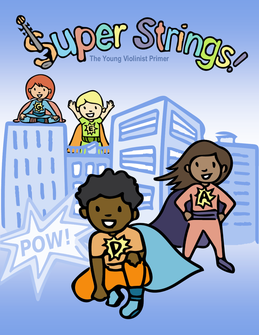






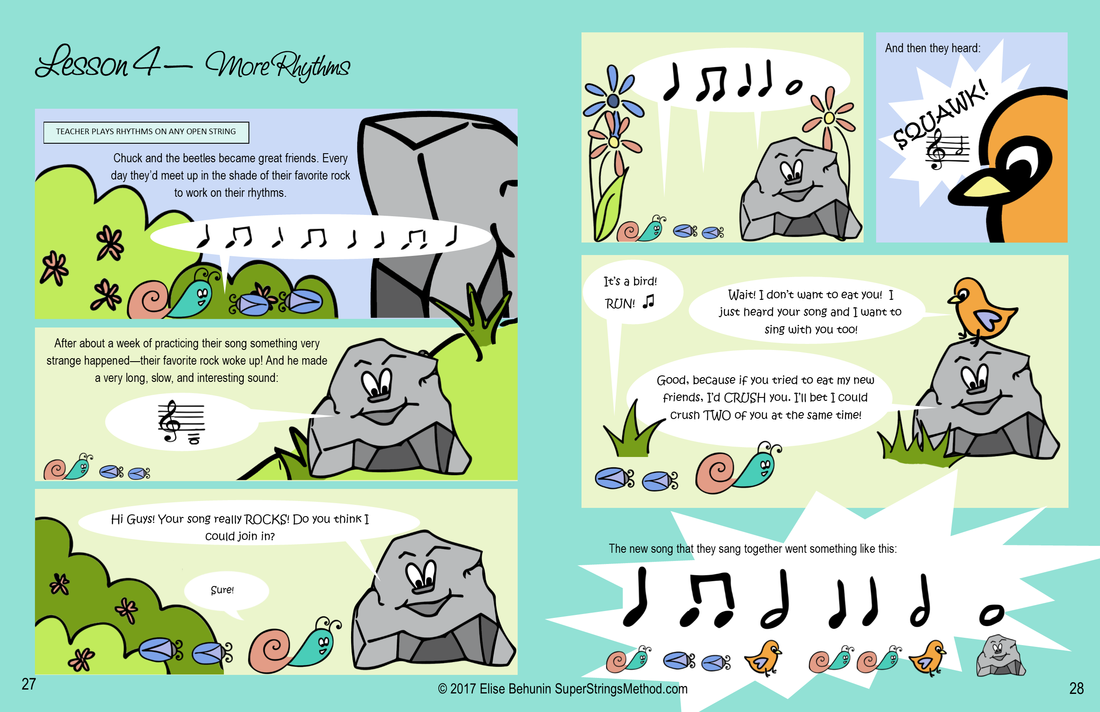
















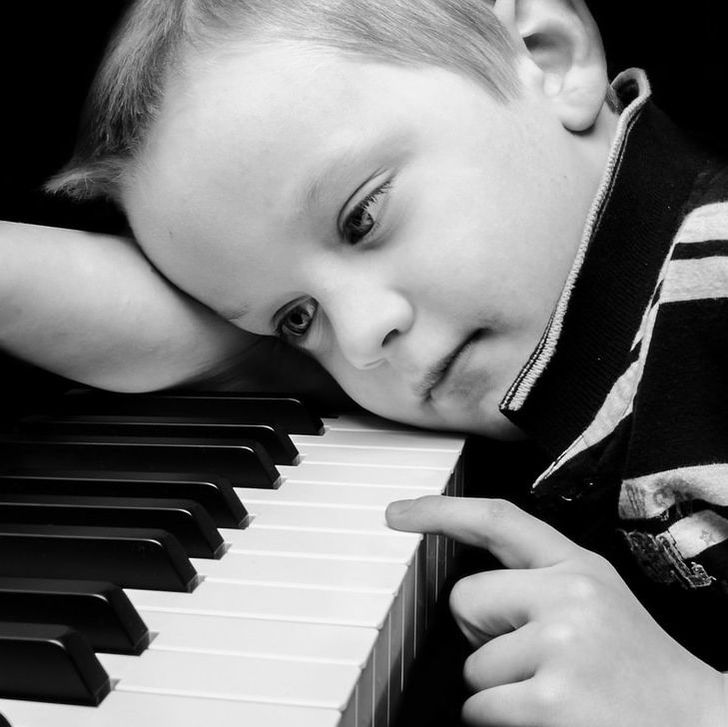
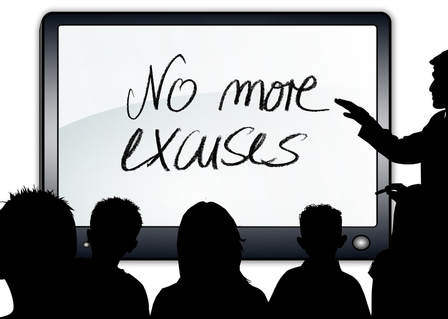

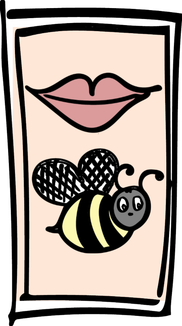

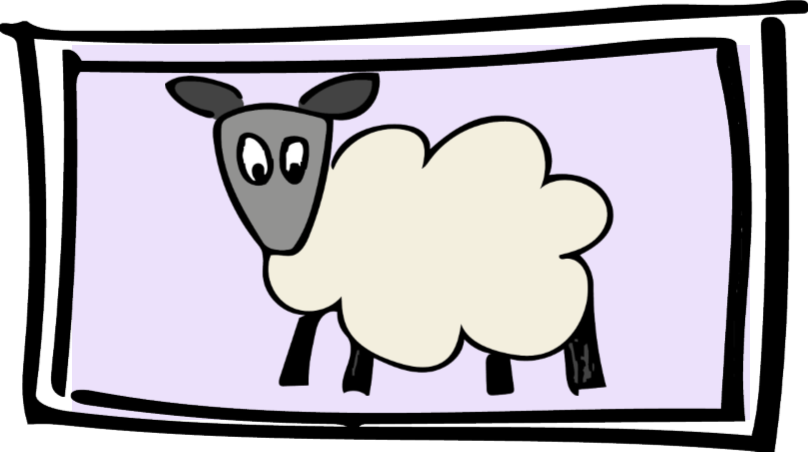

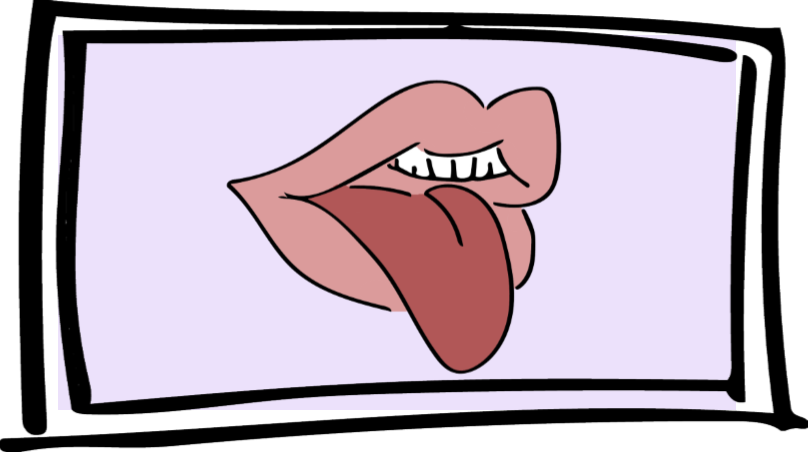
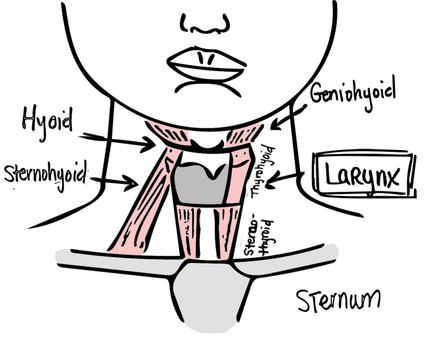
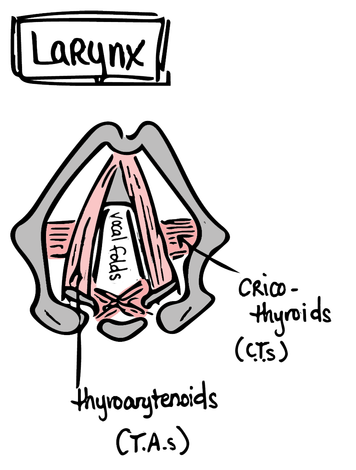



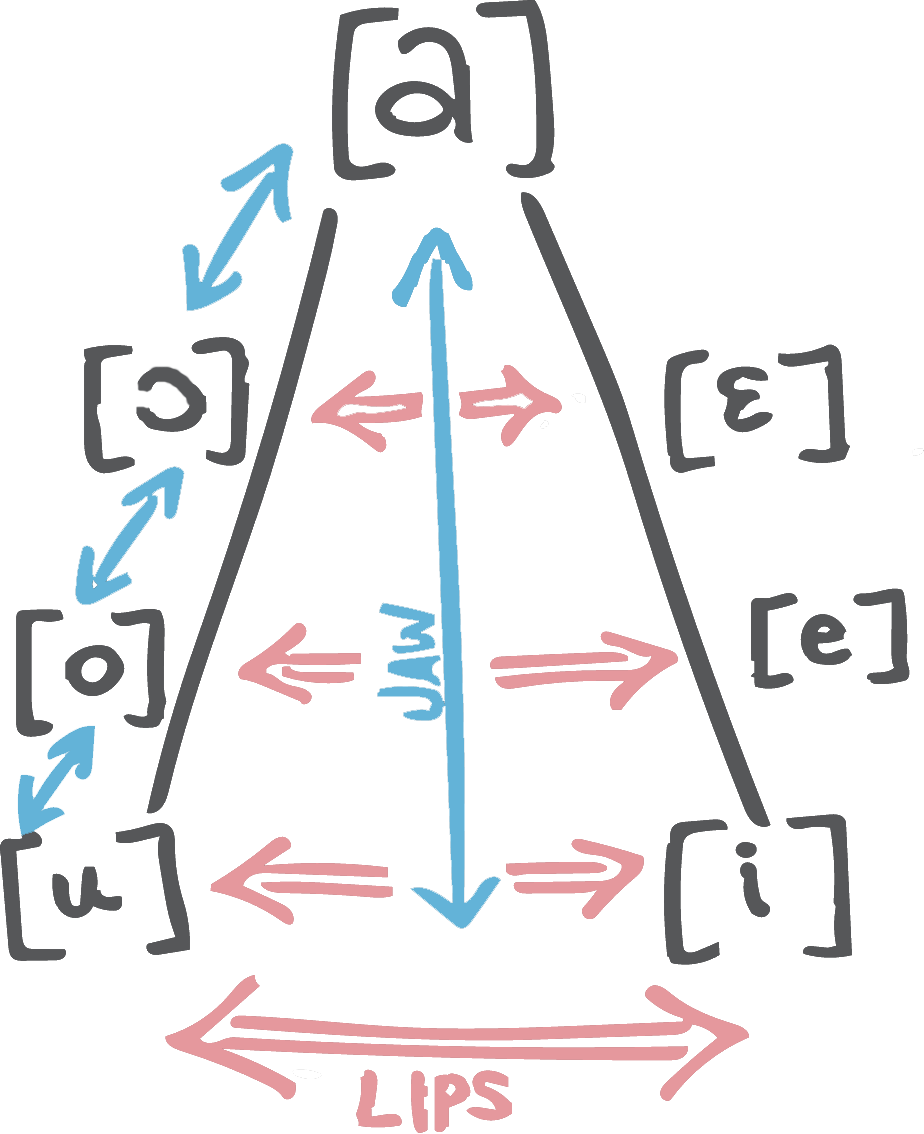
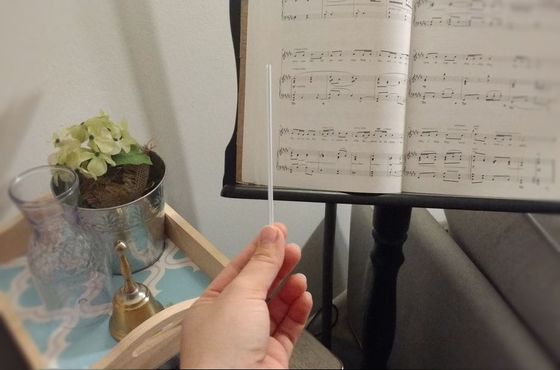

 RSS Feed
RSS Feed